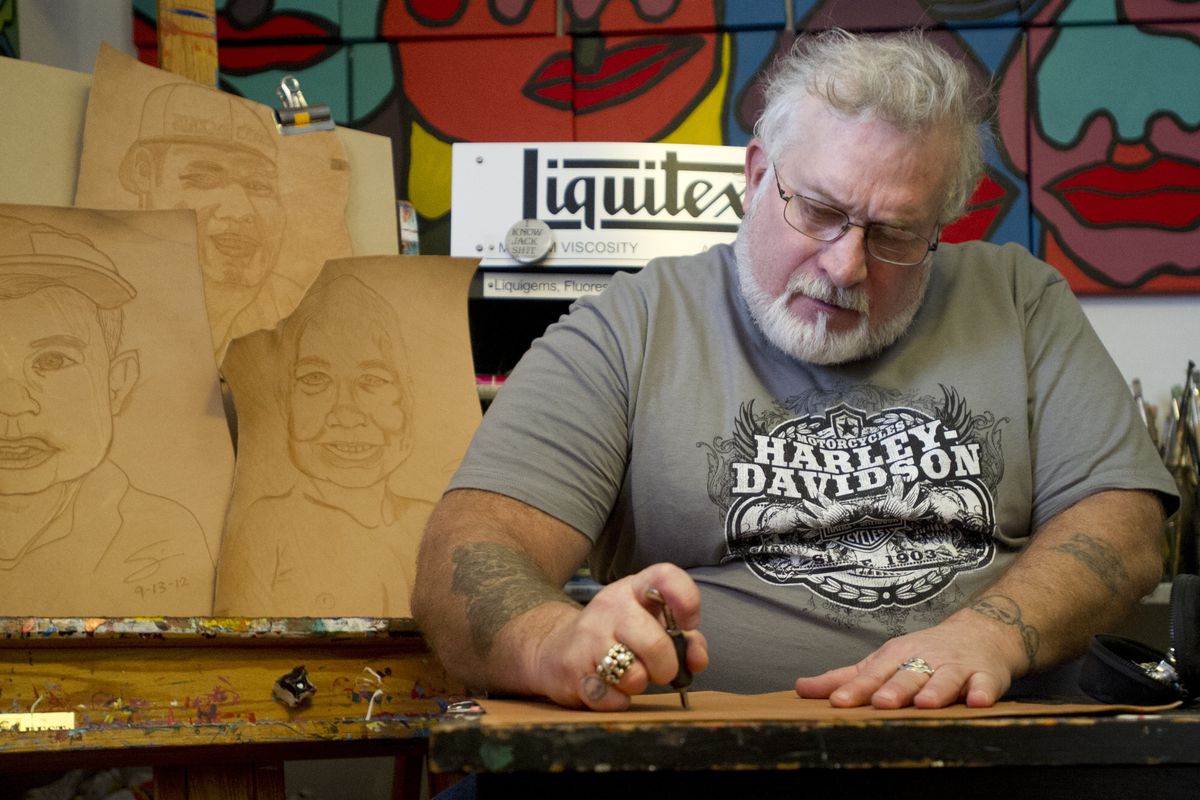White uses his art to release his inner thoughts

The first 21 years of artist Sam White’s life were filled with trials and tribulations.
Born in Seattle, White said he grew up in an abusive household; a scar on his hand reminds him every day.
“This was burned into my hand so I would stop sucking my thumb,” he said.
Art became his solace. He would copy characters from the newspaper including Mighty Mouse, Popeye and Superman. At 11, he was introduced to alcohol and marijuana and was an addict in no time.
In high school, his high grades in art made it possible for him to graduate and he became a groundskeeper. Still, he partied on. At the age of 21, when many of his peers were tasting alcohol for the first time, White, now 54, became clean and sober.
“I made the decision because I was on a road to prison and three hours in a drunk tank was enough for me,” he said.
When White joined the Air Force, he was 2 years, 1 month, and 4 days sober. Ironically, his job was military narcotics dog handler.
In 1982, he was stationed at Fairchild Air Force Base. He then went to the Philippines for six years, back to Fairchild, and then off to Desert Storm. In 1991, he was honorably discharged with “character and behavior disorders.”
“To this day I can’t stand the feel of sand on my feet,” he said, “I love the ocean but I keep my boots on.”
After White’s discharge, he apprenticed as a plumber. He started his own company, Sam the Plumber, in 1999. That same year, he stopped at a garage sale, purchased a case of oil pastels, and went to town.
He has since painted thousands of fractured and stylized portraits. Once, he passed out 100 of his paintings to visitors at the Santa Monica Pier. “I’ve been told that I’m prolific and that my style is Fauvist,” he said, “whatever that means.”
Regardless of labels, White does what he does to release thoughts and emotions.
“My art is my escape from life. It centers me and releases my inner mind and thoughts. When I get fired up, I produce so much work. It’s like I’m in a trance; when I think back I have no idea how many pieces of art I’ve done. A question I often ask myself is ‘Where do all these faces come from?’ ”
Using acrylic paint, oil pastels, ink or pencil on canvas, rocks or wood, White exaggerates features and perhaps even personalities like the “two-faced” portraits in bright colors and bold lines. Still recovering, White regularly attends meetings, where he might sketch dozens of portraits in a notebook.
His newest works are portraits that are etched or carved onto leather and then painted. He’s shown at a dozen local venues and donated work to nonprofits over the years. He’s also done pet portraits.
The final outcome, White said, just depends on what’s going on in his life, a life that will always include recovery.